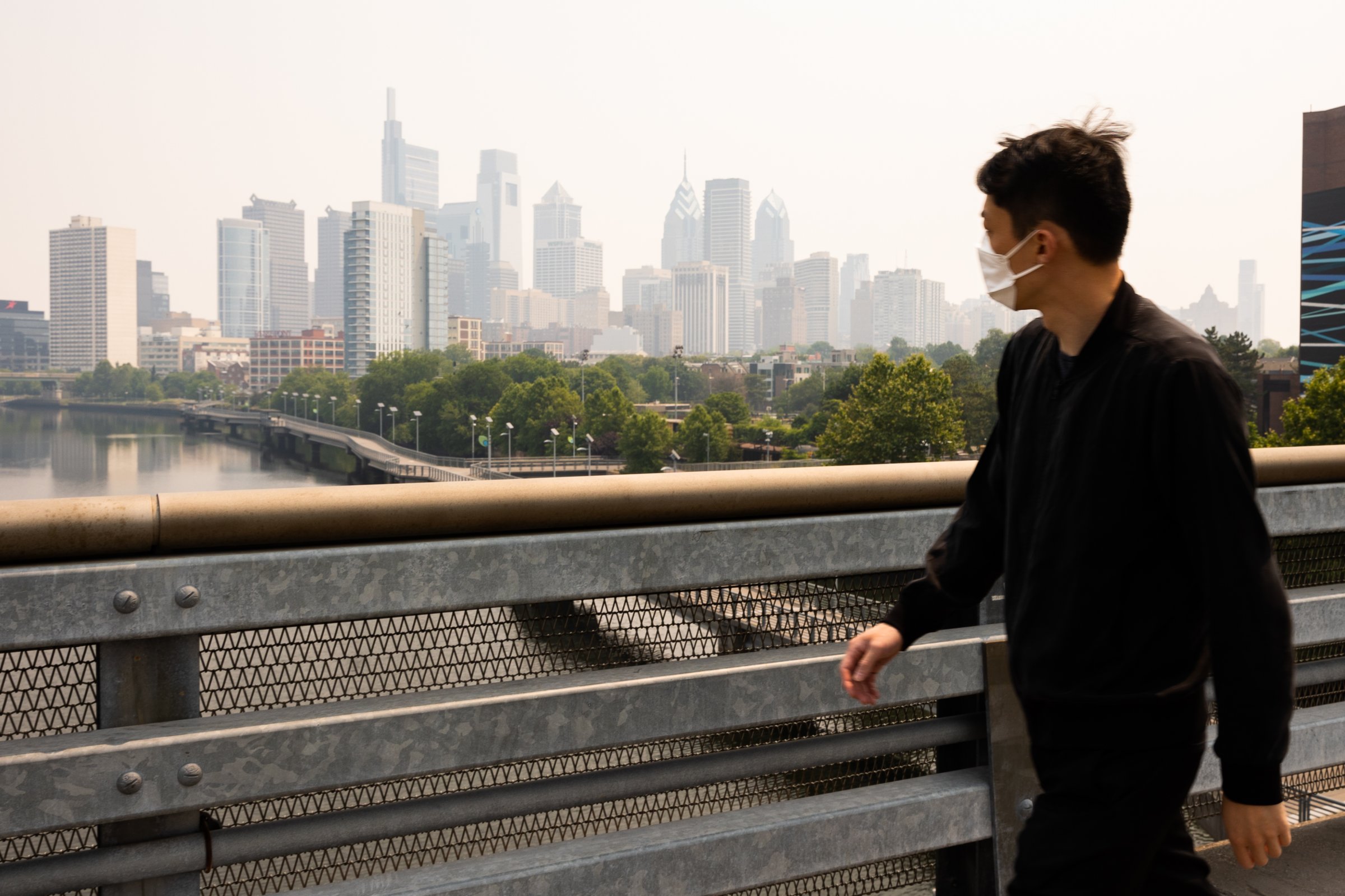
It looked like 2020 on the streets of New York City this week, as many residents unearthed their pandemic masks to protect against air that smelled, tasted, and looked smoky due to raging wildfires in Canada.
Masking during periods of poor air quality is not a new concept, even in the U.S—but it used to be a novelty when it happened. “Everyone is staying indoors and the people who are outside are wearing masks of one kind or another. It’s totally weird to see. This is a creepy feeling,” a spokesperson from San Francisco General Hospital told NBC News when the 2018 Camp Fire compromised air quality there.
What felt different this time around was how quickly and seamlessly many people reached for their face coverings—a sign that three years of pandemic living have left a mark on the American public, turning masks from something very few people have on hand to a household necessity.
Dr. Thomas Dailey, a pulmonary and critical-care specialist at Kaiser Permanente in California, says that even prior to the pandemic, he routinely recommended that California residents wear N95 respirators during wildfires. But “people were not used to having masks at home,” Dailey says, and stores often sold out of their limited supplies due to panic buying.
Now—as has been the case in other countries since long before the pandemic—even people who don’t mask every day probably have some in inventory, and they’re far easier to buy in stores. “People already have their masks. They know how to use it, they’re used to it, they’ve heard people [explain] the difference between a surgical mask and an N95 mask,” Dailey says. “There’s greater familiarity and less reluctance to put them on.”
Contrast that with the early days of the pandemic, when medical masks were so infrequently used by the U.S. public that many people had to fashion their own using T-shirts, bandanas, or scraps of fabric. Masking quickly became habitual, though: by June 2020, around two-thirds of U.S. adults said they always or usually wore a mask in stores.
Masking has dropped off significantly since then. As of January, less than half of U.S. adults said they had worn a mask over the prior three months, according to Harris Poll data commissioned by TIME.
But “you don’t unlearn habitual behaviors,” said Kathleen Hall Jamieson, who researches the U.S. public’s scientific knowledge at the Annenberg Public Policy Center of the University of Pennsylvania, in a May 2023 interview with TIME. Jamieson predicted that the muscle memory of masking would come back quickly in the face of a comparably serious health threat. She seems to have been right: Rite Aid reported a nearly 1,500% spike in mask sales in New York, New Jersey, Pennsylvania, and Connecticut this week, according to Bloomberg.
Still, there’s a key difference between a wildfire threat and a viral one. “With a wildfire you can see the hazard. You can see it, you can smell it, you can taste it,” says Raina MacIntyre, a professor at Australia’s University of New South Wales who has researched mask use during Australian wildfires. “That’s not the case with a virus.”
Mask use dropped off significantly as people grew tired of taking COVID-19 precautions, and even this past winter’s surge in respiratory viruses wasn’t enough to get some people to cover up. The question is whether people will keep reaching for their mask when confronted with invisible health threats, like viruses, in the future.
More Must-Reads From TIME
- The 100 Most Influential People of 2024
- Coco Gauff Is Playing for Herself Now
- Scenes From Pro-Palestinian Encampments Across U.S. Universities
- 6 Compliments That Land Every Time
- If You're Dating Right Now , You're Brave: Column
- The AI That Could Heal a Divided Internet
- Fallout Is a Brilliant Model for the Future of Video Game Adaptations
- Want Weekly Recs on What to Watch, Read, and More? Sign Up for Worth Your Time
Write to Jamie Ducharme at jamie.ducharme@time.com